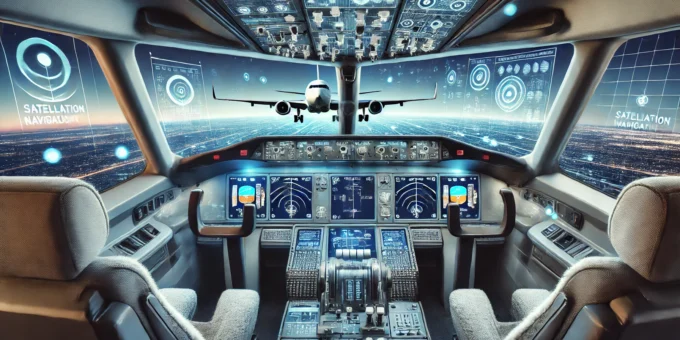
Advancements in pilot technology are revolutionizing the aviation industry, reshaping safety, efficiency, and sustainability. From AI-driven systems to wearable devices, these innovations are empowering pilots like never before. In this article, we’ll explore the transformative tools and systems redefining the role of pilots in modern aviation.
The Importance of Pilot Technology
The aviation industry thrives on precision, safety, and continuous improvement. With increasing air traffic and the demand for faster, eco-friendly transportation, advancements in pilot technology are more critical than ever. These innovations not only enhance operational efficiency but also address growing safety concerns, ensuring every flight meets stringent standards.
The Evolution of Cockpit Systems
The modern cockpit is a marvel of engineering, blending traditional controls with cutting-edge technology. Early aircraft relied heavily on mechanical instruments, but today’s cockpits feature advanced digital displays, autopilot systems, and real-time data integration. These changes have significantly reduced pilot workload, enhancing focus on critical flight tasks.
Autonomous Flight Systems
Autonomous flight is no longer the stuff of science fiction. AI and machine learning have enabled the development of systems capable of controlling entire flight operations. While fully pilotless commercial planes are still under development, semi-autonomous systems already assist in navigation, landing, and emergency scenarios.
Enhanced Flight Simulators
Pilot training has reached new heights with the latest flight simulation technology. High-definition visuals, tactile feedback, and AI-driven scenarios provide pilots with realistic training environments. These simulators are instrumental in preparing pilots for extreme weather, technical failures, and other unforeseen challenges.
Wearable Pilot Technology
Wearable technology is becoming an integral part of the aviation world. Devices like smart glasses provide augmented reality overlays, aiding navigation and maintenance. Biometric wearables monitor pilots’ health, ensuring they remain alert and fit during long-haul flights.
Augmented Reality in Aviation
Augmented reality (AR) is transforming how pilots interact with the cockpit and external environments. AR systems project essential information directly into pilots’ fields of vision, such as runway alignment and weather data. This technology reduces dependence on traditional dashboards, making navigation more intuitive.
Satellite-Based Navigation
Traditional navigation systems relied on ground-based signals, but satellite navigation has brought unprecedented accuracy. GPS and other satellite-based systems allow for precise route planning, reducing delays and optimizing fuel efficiency. This transition is a game-changer for global aviation.
Fly-by-Wire Systems
Fly-by-wire technology replaces traditional manual controls with electronic systems, allowing for smoother, more accurate aircraft handling. These systems are designed with redundancies, ensuring safety even in the event of technical failures.
Weather Prediction Systems
Advanced weather prediction tools harness the power of AI and big data to forecast conditions with remarkable accuracy. Pilots can now anticipate turbulence, storms, and other adverse weather phenomena, enabling better preparation and safer flights.
Collision Avoidance Systems
Modern collision avoidance systems use radar, GPS, and onboard sensors to prevent potential collisions. These systems alert pilots to hazards in real-time, ensuring they can take swift action to avoid accidents.
Voice-Controlled Systems
Voice-controlled technology is simplifying cockpit operations. Pilots can manage tasks such as setting altitudes, adjusting headings, and accessing data through voice commands, allowing them to maintain focus during critical phases of flight.
Electric and Hybrid Aircraft
The aviation industry is embracing sustainability with electric and hybrid aircraft. Pilots are adapting to these new technologies, which offer quieter operation, lower emissions, and reduced reliance on fossil fuels.
Advanced Communication Systems
Seamless communication is essential in aviation, and new technologies are enabling real-time interaction across vast airspaces. Satellite communication systems and AI-driven platforms ensure uninterrupted, crystal-clear communication between pilots, ground control, and other aircraft.
The Internet of Things (IoT) in Aviation
IoT is connecting systems and devices across the aviation ecosystem. From predictive maintenance to in-flight data sharing, IoT technologies enable pilots to operate more efficiently, reducing delays and enhancing overall flight experience.
Biometric Security for Pilots
Biometric technology is enhancing security and identity verification in the cockpit. Fingerprint scanners, facial recognition, and other tools ensure that only authorized personnel can access sensitive systems, boosting safety.
Machine Learning in Aviation
Machine learning algorithms optimize flight routes, predict maintenance needs, and reduce fuel consumption. These advancements streamline operations, allowing pilots to focus on their primary responsibilities.
Drones and Remote Piloting
Drones are not just tools for hobbyists—they’re becoming critical in commercial and military applications. Pilots trained in remote piloting are managing drone operations for tasks like surveillance, delivery, and disaster response.
Fuel-Efficiency Technologies
Fuel efficiency is a top priority in aviation. Advanced systems analyze flight paths, optimize engine performance, and minimize unnecessary fuel use, helping pilots reduce costs and environmental impact.
Digital Flight Logs and Records
The shift to digital flight records simplifies data management for pilots. These systems ensure accuracy, reduce paperwork, and allow for quick access to historical data, streamlining operations.
Pilot Health Monitoring Systems
Long flights demand peak physical and mental performance from pilots. Wearable devices and cockpit sensors monitor vital signs, providing real-time feedback to ensure pilot well-being.
The Future of Pilotless Aircraft
The idea of pilotless commercial aircraft is gaining traction. While regulatory and technological hurdles remain, advancements suggest that fully autonomous flights may soon become a reality.
Challenges of Adopting New Technologies
Despite their benefits, new technologies face barriers such as high costs, regulatory delays, and the need for extensive pilot training. Overcoming these challenges requires collaboration across the industry.
Regulations Surrounding Pilot Technology
Aviation authorities play a critical role in ensuring that new technologies meet safety and operational standards. Ongoing updates to regulations ensure that innovations align with industry needs.
Conclusion
The latest innovations in pilot technology are paving the way for safer, more efficient, and environmentally friendly aviation. As these advancements continue to evolve, pilots will play a vital role in integrating these tools into their operations, ensuring a brighter future for the skies.
You Can Also Read : How Pilot Technology is Revolutionizing Modern Aviation
FAQs
How does augmented reality help pilots?
Augmented reality provides visual overlays that enhance navigation and operational efficiency, improving safety and decision-making.
What is fly-by-wire technology?
Fly-by-wire technology replaces manual flight controls with electronic systems, offering precise handling and added safety features.
Are autonomous flights possible today?
Semi-autonomous flights are already a reality, with fully autonomous systems still under development and testing.
Why is biometric security important for pilots?
Biometric security ensures that only authorized personnel can access critical systems, enhancing safety and accountability.
What are wearable pilot technologies?
Wearables like smart glasses and biometric monitors help pilots maintain performance and manage in-flight health.
How do advanced simulators benefit pilot training?
Modern simulators create realistic training environments, preparing pilots for challenging scenarios without risking safety.
